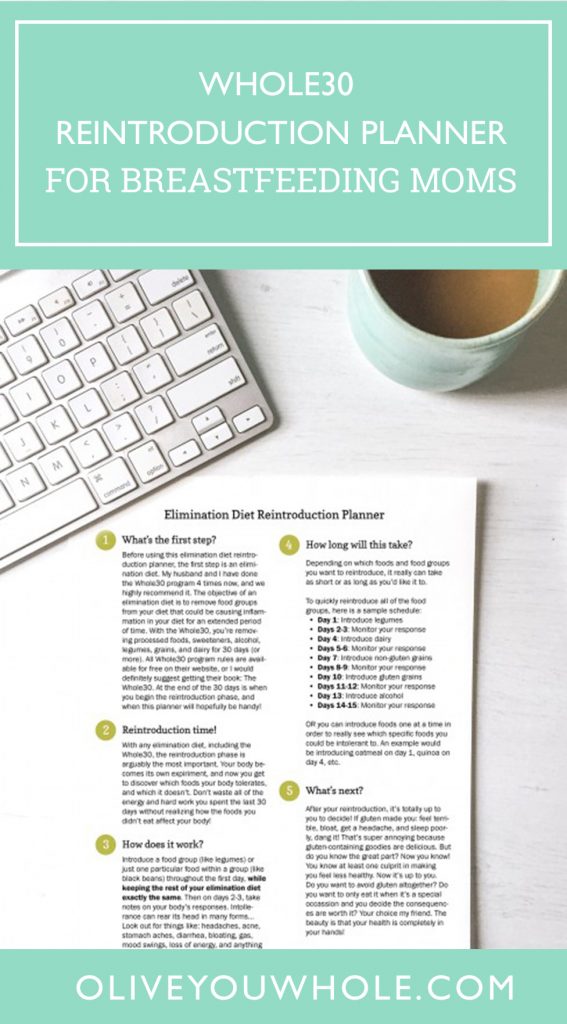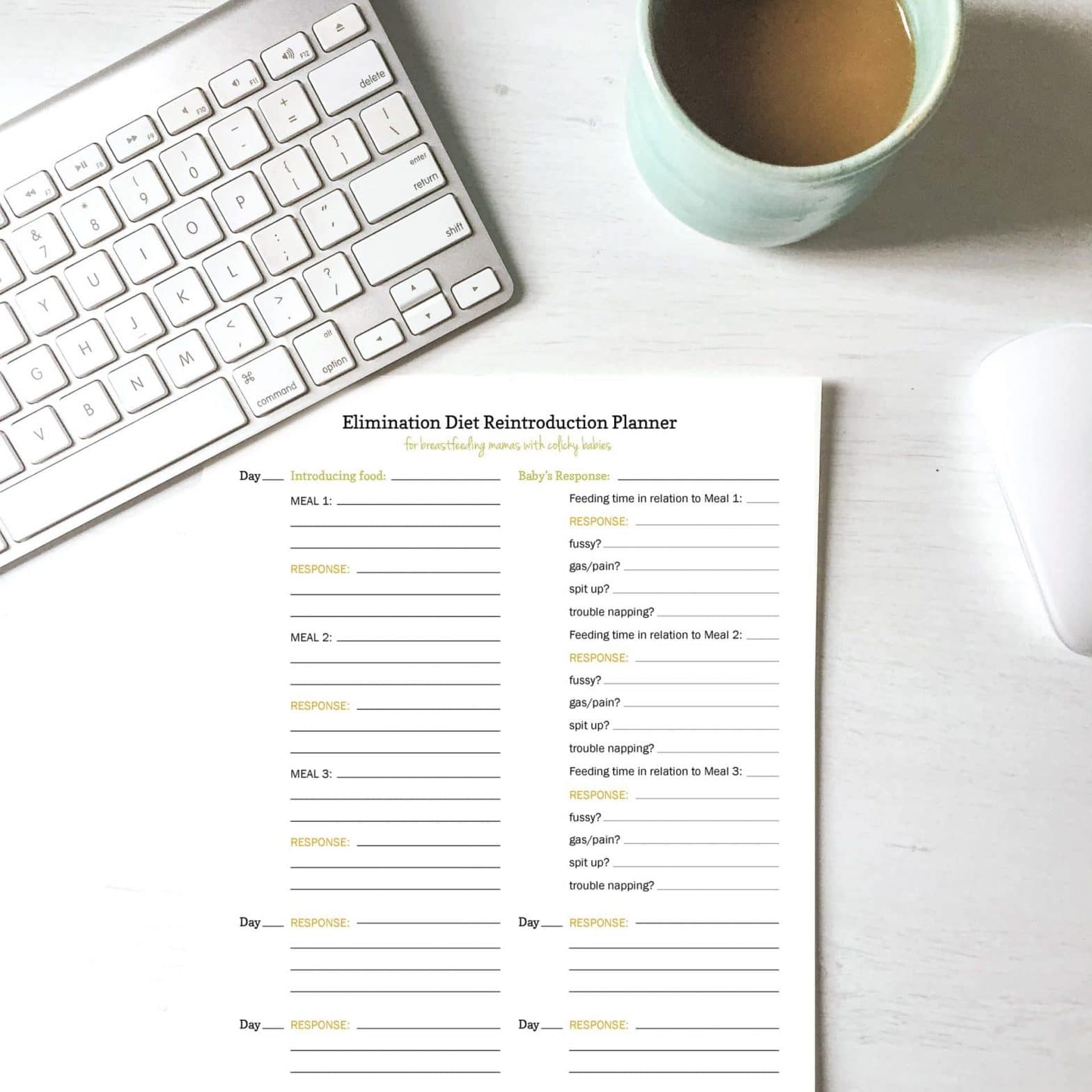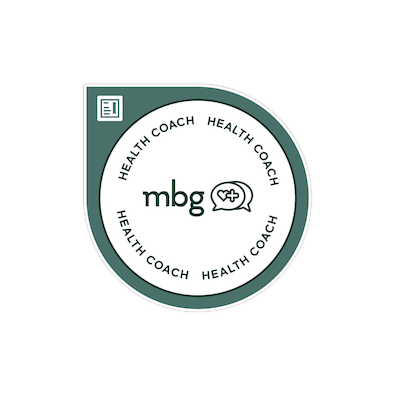Download this FREE Whole30 Reintroduction Planner for Breastfeeding Moms!!
Wait, but this is a “diet”… Should I really be dieting while I’m breastfeeding? Definitely get your doctor’s approval first, BUT what the Whole30 diet, and any elimination diet, is comprised of is the healthiest foods around. Optimal nutrition is most important while breastfeeding, since the micronutrients you are eating are being given to your baby in your breastmilk. You’ll also find that since you’re avoiding the top allergens and the most inflammatory foods, both you and your baby will have fewer GI problems, sleep better, have less skin conditions, and overall be happier with more energy! Are you still concerned? 🙂
Before using this elimination diet reintroduction planner, the first step is an elimination diet. My husband and I absolutely LOVE the Whole30 program. The goal of an elimination diet is to remove foods from your diet that could be causing you inflammation for an extended period of time. With the Whole30, you’re removing processed foods, sweeteners, alcohol, legumes, grains, and dairy for 30 days. All Whole30 program rules are available for free on their website, or I would definitely suggest getting their book: The Whole30. At the end of the 30 days is when you begin the reintroduction phase, and when this planner will hopefully be handy!
One recommendation for breastfeeding mamas, especially if you’ve never done an elimination diet before, is to make sure to get enough calories! As long as you’re getting at least 1,800 calories per day, and no fewer than 100g of carbohydrates (and nursing frequently!), your milk supply should not suffer.
At the end of the 30 days is when you begin the reintroduction phase, and when this planner will hopefully be a handy way to monitor your personal response and your baby’s response to the foods you’re reintroducing.
With any elimination diet, including the Whole30, the reintroduction phase is arguably the most important. Your body becomes its own expiriment, and now you get to discover which foods your body tolerates, and which it doesn’t. Don’t waste all of the energy and hard work you spent the last 30 days without realizing how the foods you didn’t eat affect your body, and that precious baby of yours!
How does the Whole30 Reintroduction work?
Introduce a food group (like legumes) or just one particular food within a group (like black beans) throughout the first day, while keeping the rest of your elimination diet exactly the same. Then on days 2-3, take notes on your body’s responses and your baby’s responses. Intollerance for you can rear its head in many forms… Look out for things like: headaches, acne, stomach aches, diarrhea, bloating, gas, mood swings, loss of energy, and anything else outside of the norm.
In my experience, a breastfed baby’s reaction to food you’re eating is almost immediate. Look out for things like: gassiness, fussiness, excessive spit up, change in stools, and trouble sleeping.
How long does the Whole30 Reintroduction take?
Depending on which foods and food groups you want to reintroduce, it really can take as short or as long as you’d like it to.
To quickly reintroduce all of the food groups, here is a sample schedule:
- Day 1: Introduce legumes
- Days 2-3: Monitor your response
- Day 4: Introduce dairy
- Days 5-6: Monitor your response
- Day 7: Introduce non-gluten grains
- Days 8-9: Monitor your response
- Day 10: Introduce gluten grains
- Days 11-12: Monitor your response
- Day 13: Introduce alcohol
- Days 14-15: Monitor your response
My personal recommendation for breastfeeding mamas who are trying to see what’s causing their baby’s fussiness is to introduce foods one at a time in order to really see which specific foods you and/ or your baby could be intolerant to. An example would be introducing oatmeal on day 1, quinoa on day 4, etc.
The most common problem foods for breastfeeding mamas are: dairy, soy, wheat, corn, eggs, and peanuts. Keep in mind that even if your baby seems to be intollerant to something you’re eating now, he may not be later! Remove it from your diet for 2-3 weeks, then try again and be sure to monitor your baby’s responses.
So, what happens after my Whole30 Reintroduction?
After your reintroduction, it’s totally up to you to decide! If gluten made you: feel terrible, bloat, get a headache, and sleep poorly, dang it! That’s super annoying because gluten-containing goodies are delicious. But do you know the great part? Now you know! You know at least one culprit in making you feel less healthy. Now it’s up to you. Do you want to avoid gluten altogether? Do you want to only eat it when it’s a special occassion and you decide the consequences are worth it? Your choice my friend. The beauty is that your health is completely in your hands!
Download this FREE Whole30 Reintroduction Planner for Breastfeeding Moms!!
Want to save this Whole30 Reintroduction Planner for Breastfeeding Moms Resource for later?









